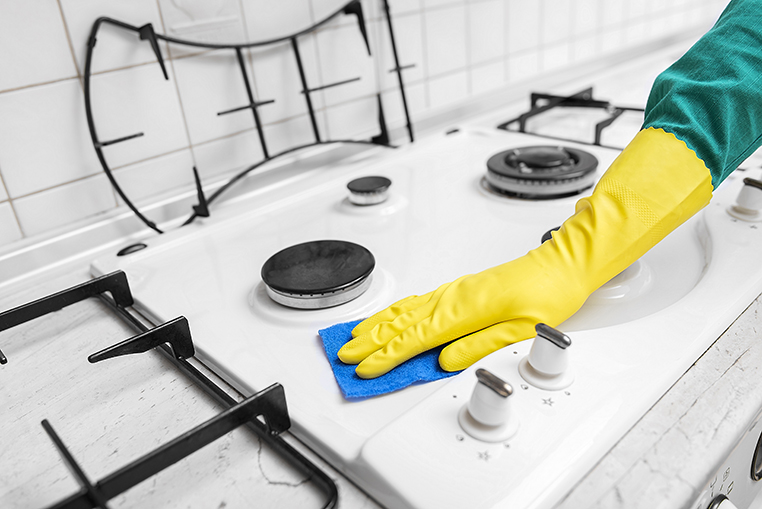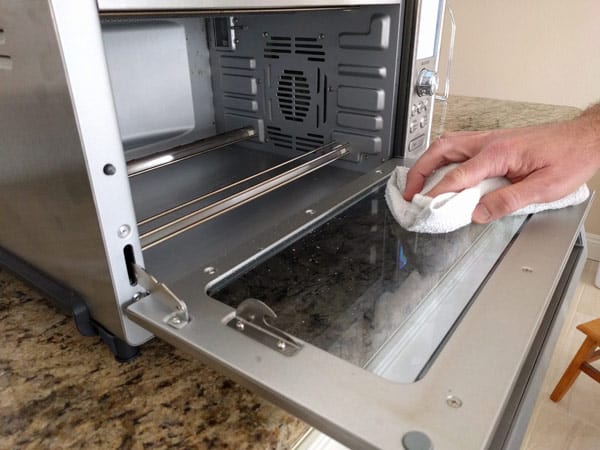
Sparkling Surfaces: Effortless Stovetop Cleaning
Maintaining a clean stovetop is essential for a functional and aesthetically pleasing kitchen. In this guide, we’ll explore effective and effortless methods to keep your stovetop sparkling and free from grease and grime.
Understanding Your Stovetop Surface
Before diving into the cleaning process, it’s crucial to understand the type of stovetop surface you have. Whether it’s a glass-ceramic cooktop, electric coil burners, gas burners with grates, or an induction cooktop, each surface requires specific cleaning techniques to avoid damage.
Daily Wipe Downs for Quick Maintenance
To prevent buildup and simplify the cleaning process, make it a habit to wipe down your stovetop after each use. Use a damp microfiber cloth or sponge to remove any spills, splatters, or grease while the stovetop is still warm. This daily maintenance routine goes a long way in keeping your stovetop consistently clean.
Removing Burned-On Residue from Glass-Ceramic Cooktops
Glass-ceramic cooktops are sleek and modern but prone to stubborn burned-on residue. To tackle this, apply a specialized cooktop cleaner or a paste made from baking soda and water. Gently scrub the surface with a non-abrasive pad or a soft cloth to lift the residue. Avoid using abrasive tools that can scratch the glass surface.
Degreasing Electric Coil Burners
For stovetops with electric coil burners, focus on degreasing the coils and drip pans. Remove the coils and drip pans, soaking them in warm, soapy water. Use a degreasing cleaner or a mixture of vinegar and baking soda to clean the stovetop surface and wipe away any accumulated grease. Ensure all components are dry before reassembling.
Cleaning Gas Burners and Grates
Gas burners and grates can accumulate grease and food debris over time. Start by removing the grates and soaking them in a solution of warm, soapy water. Use a toothbrush or a soft brush to scrub away residue. Wipe down the burners with a damp cloth and a mild degreasing cleaner. Ensure all components are completely dry before reinserting.
Tackling Stubborn Stains and Spills
For stubborn stains or spills, a mixture of baking soda and water can be a powerful cleaning agent. Apply the paste to the affected areas and let it sit for a few minutes. Scrub gently with a non-abrasive pad or sponge, then wipe away the residue. This method works well for various stovetop surfaces without causing damage.
Using Natural Cleaners for a Green Approach
If you prefer a more natural approach to stovetop cleaning, consider using household items like vinegar, lemon, or hydrogen peroxide. These ingredients have degreasing and antibacterial properties. Mix them with water or apply them directly to the stovetop surface, allowing for a green and effective cleaning solution.
Preventing Scratches and Damage
When cleaning your stovetop, be mindful of the tools and cleaning agents you use to avoid scratches or damage. Opt for non-abrasive pads, soft cloths, and appropriate cleaning solutions recommended for your specific stovetop surface. Avoid harsh chemicals or abrasive tools that can compromise the finish.
Regular Maintenance for Long-Term Cleanliness
In addition to regular cleaning, schedule periodic maintenance to ensure long-term cleanliness. Check for any loose or damaged components, tighten screws, and address any issues promptly. Regular maintenance not only keeps your stovetop clean but also contributes to its overall longevity and performance.
Enjoying a Spotless and Inviting Kitchen
With these effortless cleaning tips, maintaining a spotless and inviting kitchen becomes a simple task. Incorporate these methods into your routine to ensure your stovetop remains sparkling and functional, providing a clean canvas for your culinary adventures.
For more kitchen cleaning tips and inspiration, visit clean a stovetop. Explore a variety of cleaning methods and solutions to keep your stovetop in top condition, making your kitchen a welcoming and hygienic space.


